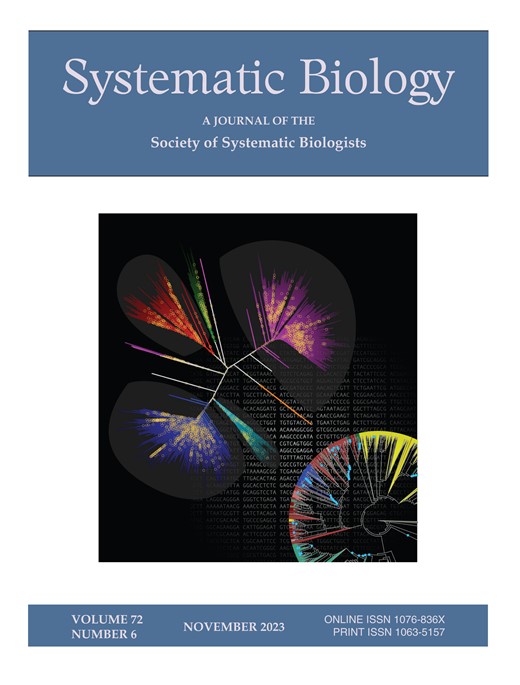Integrating Deep Learning Derived Morphological Traits and Molecular Data for Total-Evidence Phylogenetics: Lessons from Digitized Collections.
IF 5.7
1区 生物学
Q1 EVOLUTIONARY BIOLOGY
引用次数: 0
Abstract
Deep learning has previously shown success in automatically generating morphological traits which carry a phylogenetic signal. In this paper we explore combining molecular data with deep learning derived morphological traits from images of pinned insects to generate total-evidence phylogenies and we reveal challenges. Deep learning derived morphological traits, while informative, underperform when used in isolation compared to molecular analyses. However, they can improve molecular results in total evidence settings. We use a dataset of rove beetle images to compare the effect of different dataset splits and deep metric loss functions on morphological and total evidence results. We find a slight preference for the cladistic dataset split and contrastive loss function. Additionally, we explore the effect of varying the number of genes used in inference and find that different gene combinations provide the best results when used on their own vs in total evidence analysis. Despite the promising nature of integrating deep learning techniques with molecular data, challenges remain regarding the strength of the phylogenetic signal and the resource demands of data acquisition. We suggest that future work focus on improved trait extraction and the development of disentangled networks to better interpret the derived traits, thus expanding the applicability of these methods in phylogenetic studies.整合深度学习衍生形态特征和分子数据的全证据系统发育:来自数字化馆藏的教训。
深度学习在自动生成携带系统发育信号的形态特征方面取得了成功。在本文中,我们探索结合分子数据和深度学习从昆虫图像中获得的形态特征来生成全证据系统发育,并揭示了挑战。深度学习衍生形态特征,虽然信息量大,但与分子分析相比,在孤立使用时表现不佳。然而,它们可以在总的证据设置中改善分子结果。我们使用粗糙甲虫图像数据集来比较不同数据集分割和深度度量损失函数对形态学和总证据结果的影响。我们发现对枝状数据集分割和对比损失函数有轻微的偏好。此外,我们探讨了在推理中使用不同基因数量的影响,并发现不同的基因组合在单独使用时与在总证据分析中使用时提供了最佳结果。尽管将深度学习技术与分子数据相结合具有很好的前景,但系统发育信号的强度和数据采集的资源需求仍然存在挑战。我们建议未来的工作重点是改进性状提取和开发解纠缠网络,以更好地解释衍生性状,从而扩大这些方法在系统发育研究中的适用性。
本文章由计算机程序翻译,如有差异,请以英文原文为准。
求助全文
约1分钟内获得全文
求助全文
来源期刊

Systematic Biology
生物-进化生物学
CiteScore
13.00
自引率
7.70%
发文量
70
审稿时长
6-12 weeks
期刊介绍:
Systematic Biology is the bimonthly journal of the Society of Systematic Biologists. Papers for the journal are original contributions to the theory, principles, and methods of systematics as well as phylogeny, evolution, morphology, biogeography, paleontology, genetics, and the classification of all living things. A Points of View section offers a forum for discussion, while book reviews and announcements of general interest are also featured.
 求助内容:
求助内容: 应助结果提醒方式:
应助结果提醒方式:


